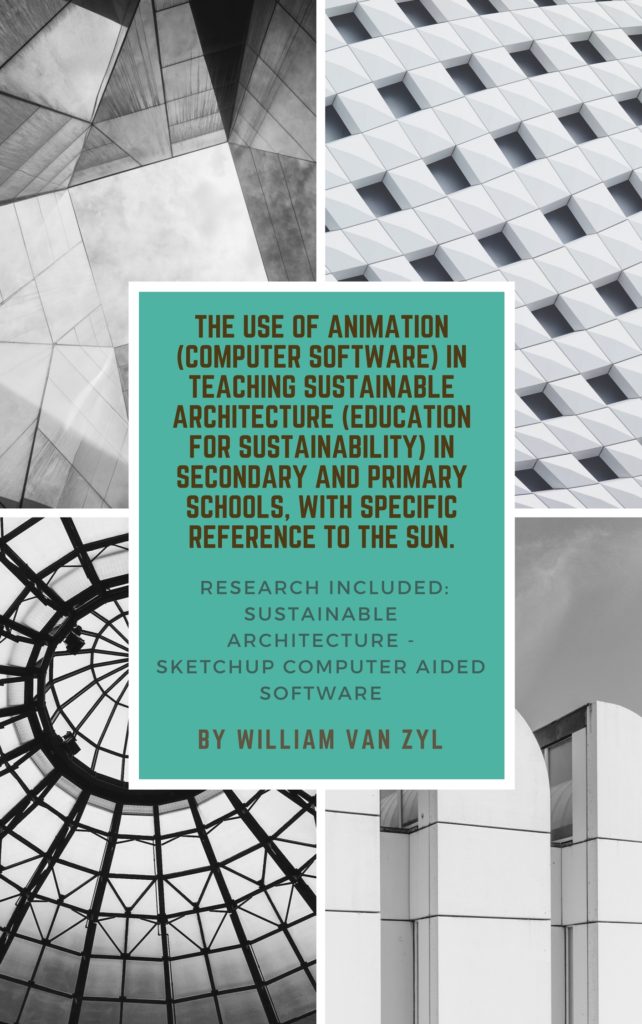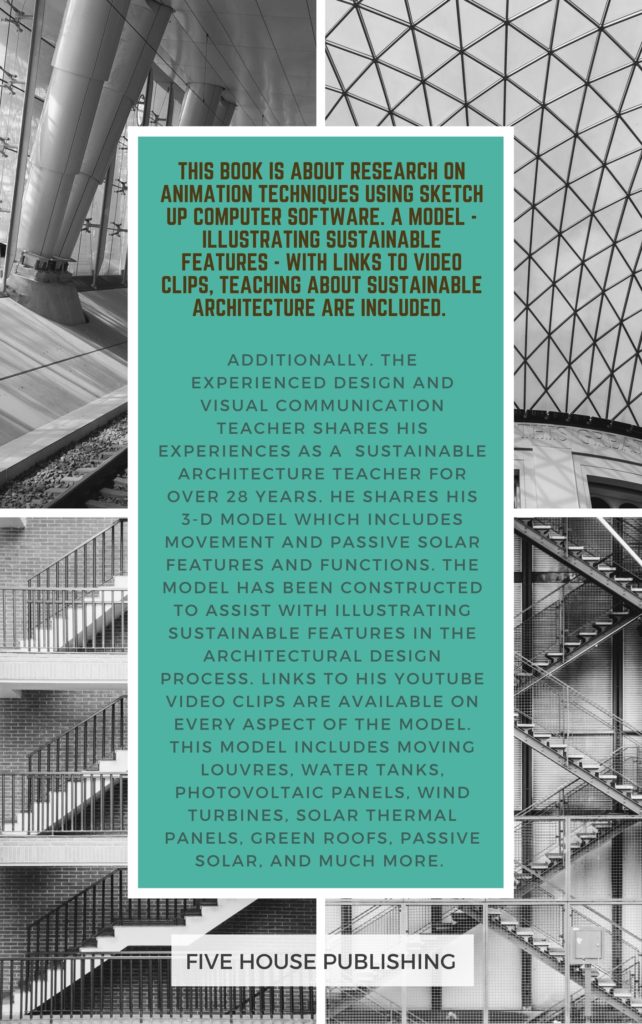Description
Research Title:
The Use of Animation (computer software) in Teaching Sustainable Architecture (Education for Sustainability) in Secondary & Primary School, with specific reference to the sun.
The Focus:
The focus of the study is with secondary school students and the use of Sketch-up (computer-aided software) exploring shadows and shading and the choice of sustainable building materials and the selection of sustainable components.
Synopsis:
This book is about teaching Sustainable Architecture to Primary School and Secondary School students.
It contains research information on Animation tools (Sketch Up Computer Aided Design Tools) as well as additional information shared by the author. The author is an experienced Design and Visual Communication teacher with over 28 years of teaching experience. In this book, he shares his research results with Secondary School students. He includes hints, tips and other relevant information, which will benefit teachers and students in the sustainability design processes. Primary school, intermediate and secondary school teachers and students will benefit from this book. For Primary and Intermediate School students and teachers the book goes beyond sustainability concepts like worm farms, composting, and vegetable gardens. The tools discussed here are Sketch Up computer-aided design tools (digital sketching). The software is free to download and very user-friendly (Sketch Up Make). A Professional version is available at an annual registration fee. Students as young as 8 to 10 years of age will be able to master the programme. It is a very user-friendly programme and students will design within minutes after watching the first SketchUp tutorial. Many video tutorials are available on YouTube and at https://www.sketchup.com/learn.
Why should you read this book?
To learn how the animation tools in Sketch Up could improve and open up some new ideas on sustainable architectural design for younger and older children. It will prompt readers to think about different approaches and challenge in-depth investigation of the architectural and sustainable design process. It specifically touches on the sun, passive solar concepts, passive ventilation concepts and the choice of building materials. The book also explains how deciduous trees (shedding leaves during winter) could be used to screen and allow the sun into the buildings. It means that the amount of sunlight (energy) could be regulated by implementing different strategies, and design features.
Who should read this book?
Teachers (primary & secondary), educators, and senior students. Design and Visual Design students. Architecture students. Anyone interested in Sketch-up software for education for sustainability.










